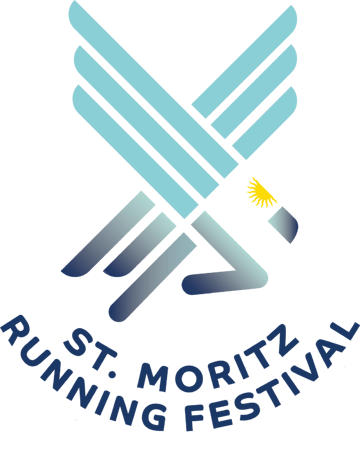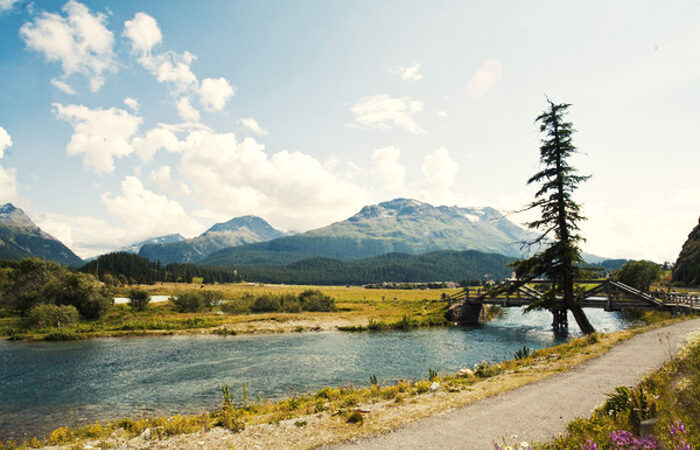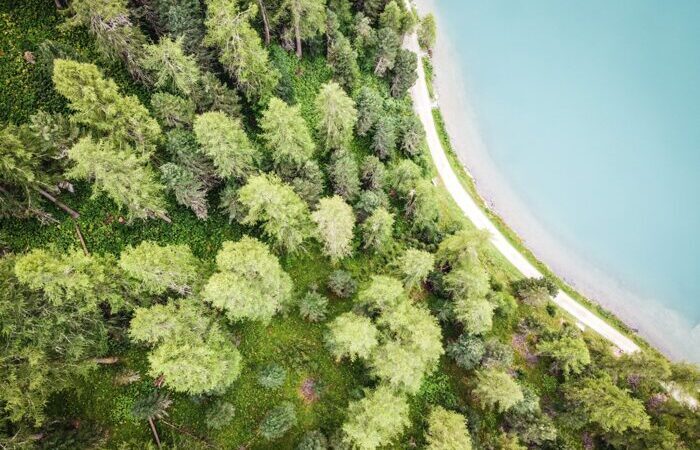TRAINING TIPS
Valuable tips on the race at 1800 meters above sea level
It's thawing...
Spring is slowly making its way into the Engadine and driving the snow off the hiking trails...for many, the time to stow away the cross-country skis again and get the running shoes out. Some were also running on the snow-covered trails, but running on snow-free ground again requires our bodies in a new way.
Therefore, the transition, both from cross-country skis and from jogging on snow is not that easy. Here I would like to give you a few tips on what to keep in mind.
While when running on snow, the backward impression is rather associated with the frustration that all the power is wasted in the slipping away of the foot, it is exactly this impulse of power that brings us forward on solid ground. In addition, the complete stretching of the legs backwards stabilises our knees and our pelvis...and is therefore important for a beautiful summer running season without injury worries!
My tip for all runners: Especially at the beginning of the season, focus on building up your push-off strength. There are various ways to do this. My favourites are:
1. Looking for hills! Especially when running uphill, our push-off strength is trained wonderfully. However, in order to really get into stretching, we should only tire ourselves to the point where we can hold a dynamic stride well. To ensure this, we should keep the distance of the hill runs short. I recommend starting with 20sec intervals and returning downhill as a break. We can repeat these intervals any number of times between 10-20x. Week by week we can then slowly increase the interval duration until we can cleanly run uphill dynamically and fast for a minute several times. You will see that this impression feeling also helps you a lot when running flat and that it is a wonderful feeling when the body flies forward like a catapult ball with every step.
2. Running ABC and jumps. To complement the initial jogging sessions, I recommend adding about 10min of running and jumping ABC exercises once or twice a week.
This not only brings variety into the training, but also has a great effect on our running-specific strength development.
We can find plenty of ideas for this on the internet. My favourites are heeling, skipping and knee lift runs, the goose step, plane run variations and jumps in many variations. As bouncing jumps, single-legged, sideways, double-legged ankle jumps or running jumps. With all exercises we should pay attention to an active and dynamic execution! To create a bit of variety and new difficulties, we can also perform all exercises uphill, backwards, or with given distances...there are no limits to the imagination! For those who are still unsure, or would like some practical input, I recommend contacting a running coach.
Another difference in running without snow is the shorter contact time with the ground, especially compared to cross-country running. But this also means that our muscles have to contract in a much shorter time to protect our joints and stabilise our bodies. Especially at the beginning of the running season, however, they are not yet used to this and react a little more slowly. For us, this means first and foremost that we have to be aware of this additional strain. Even if running seems easy...for our joints it is initially a new stress! Accordingly, we should slowly increase the running load.
My recommendation is to first reduce the amount of training by about 30% and then slowly increase it by a maximum of 10% per week. Intensive training should be done more uphill and the training should be regularly supplemented with strength and coordination exercises (see above).
Then after 6 to 8 weeks we should be ready for a running summer in which we fly through the Engadine injury-free and full of dynamism!
I wish you all a healthy summer season and numerous joyful running sessions!
Geronimo
A recipe that brings spring to your plate and gives you power for the next sporting challenges =).
Ingredients for 2 people (Geronimo`s version):
- 200gr carrots (cut into diagonal strips).
- 200gr green peas (fresh) (from the pod, alternatively: frozen)
- 250gr green asparagus (lower third peeled and cut into slanted stalks about 4cm long)
- 150gr cherry tomatoes
- 1/2 bunch fresh parsley
- a few leaves of fresh mint
- 3 wheels of ginger
- 1/2 lime, of which the peel (organic is best)
- 200gr risotto rice (e.g. Baldo, Carnaroli or Arborio)
- 2 tbsp olive oil, plus 2 tbsp to taste at the end
- 1 red onion finely chopped
- 2dl dry white wine (alternatively
- 50gr grated Pecorino sardo (matured for at least 16 months, alternatively Parmesan)
- 2 tbsp fresh cream
- 30gr roasted walnuts
- salt, pepper (black)
Preparation
First prepare all the vegetables, then everything is done quickly =).
Heat about 0.8l water and add salt. Add the ginger wheels.
Now blanch the vegetables, except for the asparagus and tomatoes, one after the other in the boiling water, remove with a ladle and immediately rinse in ice water. The carrots need 4min, the peas 2min. Save the cooking water and keep warm over a low heat. Leave the ginger in it.
Heat another wide saucepan, add olive oil and fry the asparagus very briefly until it has some colour. Remove again and set aside. Now add the red onion to the oil and sauté a little, add the rice and also sauté briefly. Now add the white wine. Let it simmer for about 2 minutes. Now add the warm vegetable cooking water peux a peux, so that there is always some liquid in the pot. Stir from time to time. At the same time, toast the nuts in a small pan without fat until they smell good. Also park next to the cooker. After about 20 minutes of cooking, just before the rice is done, add all the vegetables (including the tomatoes), turn off the heat and grate the zest of the lime. Fold in the Creme Fresh and the cheese, season with black pepper and salt if necessary.
Serve on plates and garnish with the fresh herbs and nuts....
Bun appetit!
By the way: The dish can be varied with all the colourful vegetables that you like. If you like, you can add a piece of meat or fish...I usually have a dandelion salad with orange dressing.














